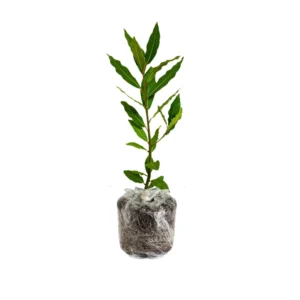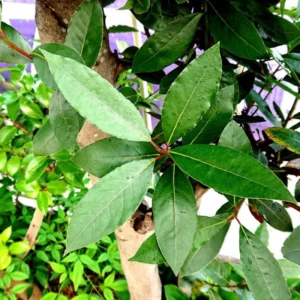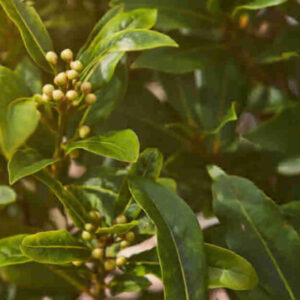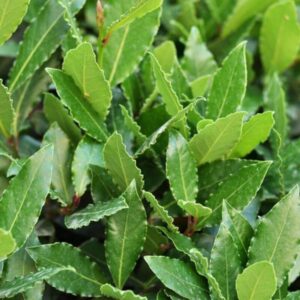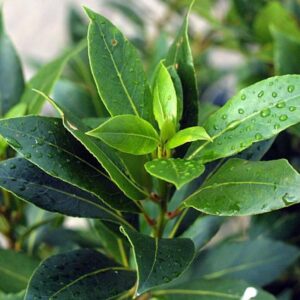Did you know the humble bay leaf is more than just a flavor enhancer in your favorite soups and stews? The bay leaf plant (Laurus nobilis) is a fascinating evergreen with a rich history, incredible versatility, and a reputation for being both hardy and beautiful. From its role in ancient laurel wreaths to its essential place in kitchens around the world, this plant is packed with personality.
In this guide, we’ll uncover everything you’ve ever wanted to know about the bay leaf plant, including how to grow and care for it, its many uses, and why every gardener or foodie should consider adding it to their repertoire.
1. The Bay Leaf Plant at a Glance

The bay leaf plant, also known as Laurus nobilis, is a treasure from the sunny Mediterranean region, where it’s been admired for its beauty, practicality, and deep-rooted symbolism. For gardeners, it’s not just a plant—it’s a living connection to ancient history and culture.
Picture this: in ancient Greece and Rome, this very plant played a starring role. Victors in athletic games and battles wore laurel wreaths made from bay leaves, a symbol of glory, achievement, and even divine protection. Emperors, poets, and champions alike donned these crowns, basking in the honor they represented.
Here’s a little nugget of trivia to impress your gardening friends: the saying “resting on your laurels” traces back to this tradition. It refers to the idea of relying on past successes rather than striving for new accomplishments—something this ever-resilient plant would never do!
For the modern gardener, growing a bay leaf plant isn’t just about adding an aromatic herb to your kitchen lineup. It’s about cultivating a piece of history, a plant that’s thrived for centuries and earned its spot in the annals of greatness. Whether you’re planting it for its culinary uses or as a decorative shrub, you’re stepping into a tradition that dates back thousands of years.
2. Types of Bay Leaf Plants
Not all “bay leaves” are created equal! True bay leaves come from Laurus nobilis, which is the gold standard for culinary use. However, there are other plants, like the California bay (Umbellularia californica) and Indian bay (Cinnamomum tamala), often mistaken for the true bay.
How can you tell the difference? True bay leaves are oval, dark green, and slightly leathery with a subtle, sweet aroma. Stick with Laurus nobilis for cooking to avoid any bitter surprises.
3. How to Grow Bay Leaf Plant
Growing bay leaf plants is surprisingly simple, whether you’ve got a spacious garden or just a sunny windowsill. These versatile evergreens are as happy in a cozy pot as they are in the ground, making them perfect for gardeners of all spaces and skill levels. Let’s dig into what they need to thrive:
-
Soil: Bay leaf plants love soil that drains well and leans slightly acidic. If you’re growing in a pot, mix some sand into your potting soil to create the perfect blend. This keeps their roots healthy and avoids waterlogging.
-
Sunlight: These Mediterranean beauties are sun worshippers! Give them full sun whenever possible. If your garden or balcony offers a mix of light and shade, don’t worry—they’ll adapt and still flourish.
-
Watering: Bay plants are not fans of soggy feet. Check the top inch of soil; if it feels dry, it’s time to water. Overwatering can lead to root rot, so it’s better to err on the side of caution.
-
Pruning: Regular trimming not only keeps your plant looking neat and bushy but also promotes new growth. Bonus: every snip is a chance to harvest aromatic leaves for your kitchen!
Want to grow indoors? Bay plants are container-friendly and love a sunny spot by a window. They’re also quite forgiving in cooler climates, so if frost is a concern, simply bring the pot indoors for the winter.
4. Common Problems with Bay Leaf Plants
While bay leaf plants are known for their resilience, even these hardy evergreens can run into a few hiccups. Knowing what to watch for will help you keep your plant thriving and problem-free. Here’s a quick rundown of common challenges and how to tackle them:
-
Pests: Scale insects are the occasional unwelcome guests on bay leaves. These little critters look like small, raised bumps on the leaves and stems. But don’t worry—an easy fix is to wipe the leaves gently with neem oil or insecticidal soap. Regularly inspecting your plant ensures you catch any invaders early!
-
Yellowing Leaves: Seeing your bay leaves turn yellow? That’s your plant’s way of saying, “Too much water!” Overwatering or poor drainage is often the culprit. Let the soil dry out slightly between waterings, and make sure your pot or garden bed drains properly. A happier, healthier plant will thank you with lush green growth.
-
Fungal Diseases: Bay plants can sometimes fall victim to fungal issues like leaf spot, especially in crowded or poorly ventilated areas. To keep this at bay (pun intended!), give your plant plenty of breathing room. Pruning to improve airflow and avoiding overhead watering can make a big difference.
5. Harvesting and Storing Bay Leaves
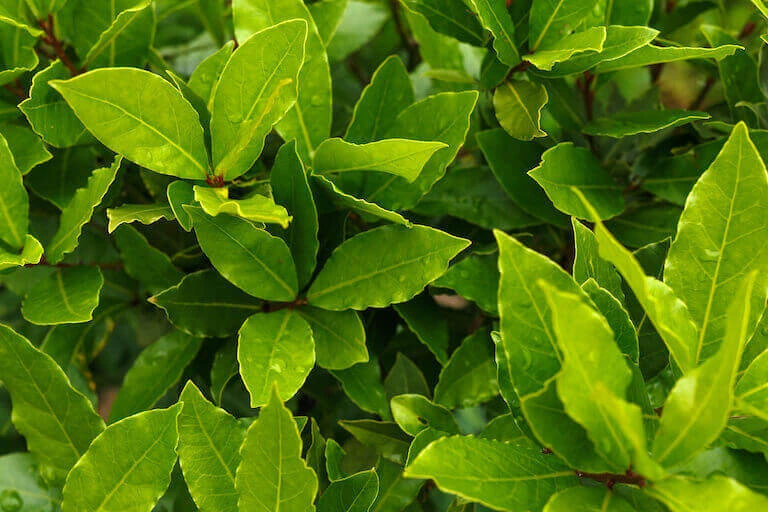
The best time to harvest bay leaves is when they’re fully mature, as these have the richest aroma and flavor. Simply snip a few leaves, wash them, and either use them fresh or dry them for later.
To dry, spread the leaves out in a single layer in a well-ventilated space. Once dry, store them in an airtight container for months of use. Fun tip: Fresh bay leaves have a milder flavor, while dried ones are more concentrated.
6. Culinary Uses of Bay Leaves
Bay leaves are a cornerstone of global cuisine. Here are some ways to use them:
-
Soups and Stews: Add a couple of bay leaves while simmering for a subtle, earthy depth of flavor.
-
Rice Dishes: Toss one into your rice pot for an aromatic twist.
-
Pickling and Marinades: Their fragrant oils enhance brines and rubs.
Pro Tip: Always remove bay leaves before serving your dish—they remain tough even after cooking.
7. Medicinal and Aromatic Benefits of Bay Leaves

Beyond the kitchen, bay leaves have been used in traditional medicine to aid digestion and reduce inflammation. A bay leaf tea can soothe upset stomachs, and their essential oils are often used in aromatherapy for relaxation.
Bay leaves are also a natural pest deterrent. Placing a few in your pantry can help keep pesky insects at bay.
8. Fun Facts and Myths About Bay Leaf Plants
-
In ancient Rome, bay leaves were believed to protect against lightning strikes.
-
The plant has been a symbol of victory and wisdom for millennia.
-
Some cultures burn dried bay leaves for their pleasant aroma and to ward off negative energy.
9. Where to Buy Bay Leaf Plants or Leaves
You can find bay plants at most nurseries or online gardening shops. Look for healthy, pest-free specimens. Prefer seeds? While they’re an option, keep in mind that germination can be slow.
For culinary leaves, ensure they’re organic and food-grade, especially if you’re buying in bulk.
Visit us to buy healthy and pest-free live bay leaf plants to grow your own herb!
10. FAQs About Bay Leaf Plants
Can You Eat Bay Leaves Directly?
Not really! While bay leaves are perfectly safe to cook with, munching on them straight from the pot isn’t ideal. Their leathery texture makes them tough to chew and digest, which is why they’re usually removed from dishes before serving. Think of bay leaves as the culinary MVP—working hard behind the scenes to add flavor without being the star on your plate.
How Long Does a Bay Leaf Plant Live?
Here’s some good news: with proper care, a bay leaf plant can be a lifelong companion! These hardy evergreens can thrive for decades, sometimes even up to 50 years or more. Regular pruning, good soil, and plenty of sunshine can help your bay plant stay healthy and vigorous for the long haul.
Are There Toxic Varieties?
Yes, and this is where knowing your plants pays off. True bay leaves from Laurus nobilis are perfectly safe for culinary use. However, other plants like cherry laurel (Prunus laurocerasus) or mountain laurel (Kalmia latifolia) are toxic and should never be consumed. If you’re growing or buying bay leaves, double-check that they’re the culinary kind to keep your meals safe and delicious.
Conclusion
The bay leaf plant is more than just a cooking essential—it’s a piece of living history, a practical garden addition, and a source of natural beauty. Whether you’re a seasoned gardener or a budding chef, there’s so much to love about this versatile plant.
Ready to start growing your own bay leaf plant? Share your thoughts, questions, or bay leaf successes in the comments below!

